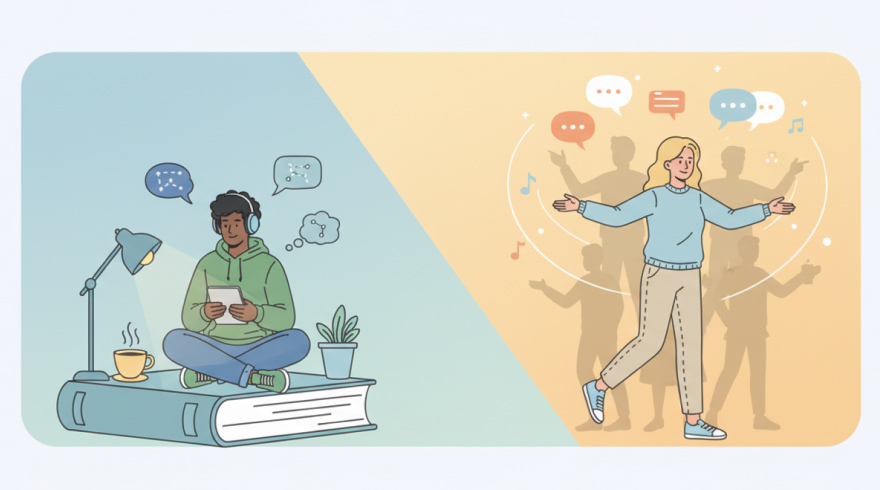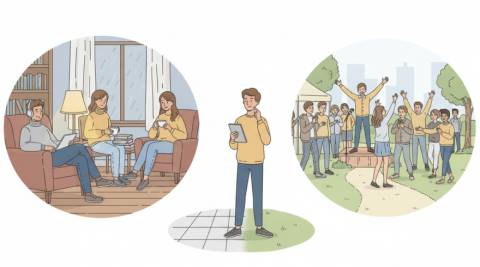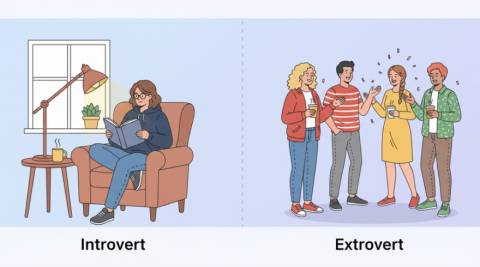A Complete Guide to Introvert Archetypes: Science, Strengths, and Practical Insights

Understanding Introversion Through Four Core Archetypes
Most people imagine introversion as shyness or silence, yet research points to a spectrum of inner motivations, energy rhythms, and cognitive styles. Across decades of personality science, psychologists have noticed recurring patterns that help clarify why some quiet folks are imaginative conversationalists while others conserve words with guarded precision. This article explores a nuanced framework and translates it into daily life, career choices, and relationship dynamics.
Scholars often group quieter dispositions into a functional model that many readers recognize as the four types of introverts. This approach emphasizes differences in social bandwidth, internal narrative, sensory thresholds, and pacing, rather than lumping every reflective person into a single box. It offers a language for everyday experiences, from preferring depth over breadth to needing buffers between events.
When people discuss temperament at work or at home, they frequently reach for labels that summarize lived patterns, which some describe as introvert personality types. Rather than stereotyping, the goal is to highlight distinctive advantages and needs so collaboration feels natural and sustainable for everyone involved.
Within this framework you’ll meet four patterns, Social, Thinking, Anxious, and Restrained, each with its own tempo, strengths, and growth edges. These profiles help decipher situations where preferences conflict, and they also illuminate meaningful self-care. In practical terms, the model reflects consistent behaviors that many refer to as types of introvert, and seeing the nuance invites empathy instead of judgment.
- Social: Prefers intimate gatherings and intentional conversation.
- Thinking: Reflective, imaginative, and highly self-aware.
- Anxious: Sensitive to uncertainty and social ambiguity.
- Restrained: Deliberate, methodical, and slow to warm up.
The Four Archetypes Explained with Benefits, Use-Cases, and Strength Stacks
Each archetype blends inner orientation with outward habits, which unlocks different superpowers depending on context. Leaders who tailor roles and rituals to natural rhythms see performance soar, while individuals who honor their chronotype and sensory limits find they can contribute with stamina. In several leadership playbooks you’ll find references to the 4 types of introverts, and below you’ll see how each pattern creates value in teams, families, and creative pursuits.
One of the biggest surprises for many readers is how creativity intertwines with calm. Artistic breakthroughs often come from patiently incubated ideas, meticulous iteration, and small-batch experiments. That’s why it helps to map strengths to tasks using a clear overview of introverted personality types, especially in roles requiring focus, foresight, and concise decision-making.
Because each pattern shines in specific conditions, it’s effective to design work weeks with task–energy alignment. Strategists, engineers, analysts, composers, and editors frequently benefit from quiet spans and minimal context-switching. Many people casually refer to these patterns as introvert types, and nuance here lets you match priorities with peak cognitive states.
| Archetype | Snapshot | Core Strengths | Watch-Outs | Helpful Habits |
|---|---|---|---|---|
| Social | Enjoys small groups and purposeful connection | Deep listening, curating meaningful networks | Overbooking intimate time can still drain energy | Schedule snug gatherings and recovery buffers |
| Thinking | Highly reflective with vivid inner world | Original ideas, long-form focus, meta-cognition | Risk of analysis paralysis or idea hoarding | Externalize drafts and ship prototypes early |
| Anxious | Alert to ambiguity and social risk | Contingency planning, threat modeling, empathy | Rumination and avoidance loops under stress | Grounding routines and graded exposure |
| Restrained | Deliberate pacing and methodical starts | Reliability, accuracy, thoughtful decisions | Perceived aloofness or slow responsiveness | Warm-up rituals and clear decision windows |
- Design roles so deep-focus contributors can protect maker time.
- Pair ideators with finishers to speed translation into action.
- Set predictable cadences to reduce cognitive tax from surprises.
- Use meeting alternatives for updates and asynchrony for quality thinking.
How Introverts and Extroverts Complement Each Other
Teams thrive when people bring different social accelerators and brakes to the same vehicle, because complementary temperaments prevent groupthink and burnout. Fast-moving brainstorms can ignite possibilities, while slower, second-order checks protect against blind spots. When managers honor both high-energy sprints and reflective reviews, momentum compounds over time and morale stays high.
In joint initiatives, you’ll often see energetic collaborators seeking bright-room engagement, while reflective partners contribute refined insights after processing. This symbiosis works best when leaders acknowledge the unique cadence of extroverted personality types, and then choreograph handoffs that make every participant feel capable and respected.
Collaboration norms also benefit from shared language, especially for people navigating cross-functional partnerships. It helps to establish a common map that covers personality types introvert vs extrovert, because mutual expectations reduce friction and encourage clear agreements about how to make decisions, share updates, and celebrate milestones.
- Create dual pathways for input: live riffing and async memos.
- Balance rapid iteration with checkpoint retros.
- Rotate facilitation so every voice influences the arc of work.
Practical Playbooks: Careers, Relationships, and Daily Routines
Application matters more than labels, so use archetypes as a compass rather than a cage. The Social profile might excel at customer research or intimate stakeholder workshops, while the Thinking profile can architect systems and narratives that hold complexity without confusion. The Anxious profile notices edge cases before they bite, and the Restrained profile builds trust through consistency and clear standards.
In many guides, you’ll see sweeping statements about all quiet people, yet calibration is where the magic happens. Team leads can gain traction by translating insights about types of introverts into job design, performance rhythms, and communication playbooks that support both velocity and quality at the same time.
Personal growth becomes easier when you track energy patterns through a week and arrange calendars accordingly. Relationship rituals improve when partners respect ramp-up time and sensory thresholds. This same adaptability helps extroverts feel seen too, especially when organizations map personality types extrovert to outreach, advocacy, and real-time collaboration work that sparks enthusiasm and collective momentum.
- Time-block cognitively heavy tasks for when your mind is freshest.
- Use quiet cooldowns after intense collaboration to restore clarity.
- Design “social budgets” that fit actual capacity rather than ideals.
- Adopt shared signals for focus hours and interruption policies.
FAQ: Common Questions About the Four Introvert Archetypes
Are these archetypes rigid labels or flexible patterns?
They are descriptive patterns, not destinies, and most people show a blend that shifts with life stage, stress, and environment. You can use the ideas to select supportive habits, better boundaries, and collaborative agreements that feel motivating rather than restricting. Over time, intentional practice lets you flex toward needs without losing your core strengths.
How do I identify my primary pattern without formal testing?
Start by journaling energy highs and lows during different activities, then note what drains you versus what reliably restores you after effort. Many readers enjoy reflective prompts and brief self-checks, and some find it helpful to explore a types of introverts quiz for language they can discuss with friends, mentors, or managers.
Can someone shift from one pattern to another?
Yes, context matters enormously, and people often develop secondary patterns as they gain skills, change roles, or navigate new environments. With coaching, therapy, or deliberate practice, you can build capabilities that complement your native strengths, which broadens your range without erasing your temperament.
How does this framework compare with popular personality models?
It’s compatible with trait-based systems and works well alongside values, motivation, and strengths tools that organizations already use. The biggest advantage is practical language that translates into daily choices, which helps teams build rituals where contribution beats performance theater.
What’s the simplest way to remember the categories?
A handy mnemonic is STAR: Social, Thinking, Anxious, Restrained, which cues needs around connection style, ideation depth, risk sensitivity, and pacing. Educators and managers sometimes summarize them as the 4 types of introvert, and the STAR shorthand keeps the concept memorable during planning and retrospectives.
Latest News



